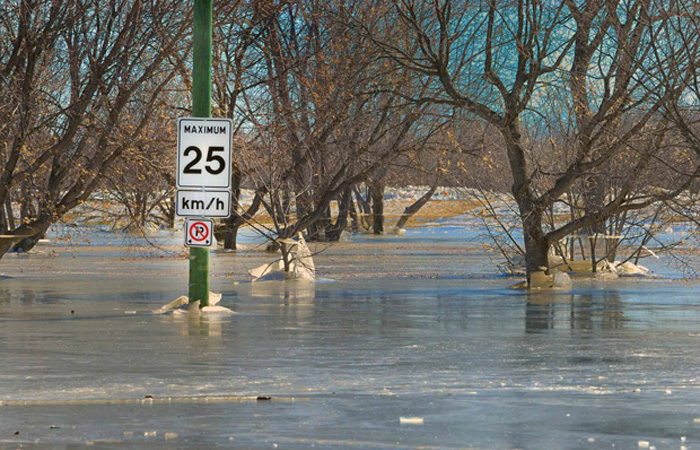Manitoba Transportation and Infrastructure is reminding motorists to be safe, obey road closures and do not attempt to drive through flooded areas or across overtopped or damaged bridges.
Unpreceded rains have resulted in overland flooding, multiple road closures and damages to crossing and road infrastructure. There are a significant number of provincial and municipal roads that have been damaged or closed in the Parkland region due to flooding conditions.
Provincial crews are currently deployed to assess the full impact of the weather system and respond as required. Motorists who are not in the Parkland region are asked to avoid the area and those who are already in the area and are required to travel are strongly encouraged to plan their routes before travelling by checking www.manitoba511.ca or calling 511.
The Hydrologic Forecast Centre has issued an overland flood warning for the Parkland region as recent precipitation combined with snowmelt from higher elevations has resulted in significant run-off that has overwhelmed creeks, rivers and drains, causing flooding and significant damage to crossings and other infrastructure.
This burst of water is moving through creeks, river, and drains eastward off the escarpment and may still affect downstream communities and infrastructure before reaching Dauphin Lake or Lake Winnipegosis. The level of Dauphin Lake is forecast to exceed flood stage in the next two days and remain above flood stage until the end of June with normal weather conditions. The peak level is forecast at 858.4 feet.
The flood warning for all rivers and drains in the Parkland region draining out of the Duck and Porcupine mountains remains in place due to the heavy precipitation in the area. Water levels on rivers and drains remain high, and property owners are advised to remain vigilant and take any necessary precautions.
A flood warning continues for the Winnipeg River and Whiteshell areas.
Flooding continues in parts of the Interlake, Red River Valley and many other portions of central and southern Manitoba, impacting communities and properties and resulting in damages to infrastructure, loss of road access and evacuations.
The Red River peaked at Ste. Agathe, St. Adolphe and the Red River Floodway inlet on May 13, and is stable or declining at all locations upstream of Winnipeg. The river is expected to remain high for an extended duration, likely into June.
The Portage Diversion and Red River Floodway continue operation.
Water level forecasts for rivers will be updated to determine impacts from received and forecast precipitation. A complete list of flood warnings, watches and high water advisories is available in the daily flood reports found at gov.mb.ca.
Private well owners are reminded to test their wells to determine whether they need to take steps to improve water quality and address potentially harmful bacteria. Testing is recommended at least once a year after the spring run-off or overland flooding.
People should avoid walking through floodwaters as they may contain micro-organisms that could make them sick.
Several communities throughout the province continue to be impacted by high water levels. The Manitoba Emergency Measures Organization (EMO) continues to work with all local authorities and emergency management partners to provide guidance and support for response and recovery activities. At this time, 33 states of local emergency have been declared. Manitoba EMO continues to work with Indigenous Services Canada (ISC) in supporting ISC-led response measures with First Nation communities.
The Manitoba government recently announced a Disaster Financial Assistance (DFA) program to assist individuals and municipalities experiencing damages to infrastructure, private residences, farms or small businesses due to spring flooding.
DFA programs provide provincial assistance for certain disaster-related losses when a widespread natural disaster strikes and creates an unreasonable financial burden. DFA helps Manitobans recover by providing financial assistance for uninsurable losses to basic and essential property. DFA will also assist with verified livestock losses.
Manitobans are encouraged to check with their insurance providers to review their policy coverage before applying for DFA. Insurable costs, such as sewer backup, are not covered by DFA. More information on DFA programs is available at manitoba.ca.
Up-to-date information on highway conditions, including detours and road closures, is available at manitoba511.ca or by calling 511.
Flood mitigation assistance can be directed to the local authority. In case of an emergency, residents are advised to contact 911.
For questions about forecasts, water levels, provincial waterways or provincial water control infrastructure, call 204-945-1165.
For more information about flooding in Manitoba, including forecasts, spring flooding hazards and mental health and wellness, visit manitoba.ca.





